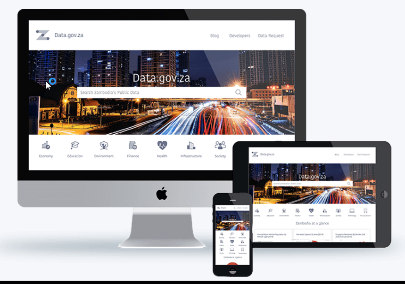All around the globe, market expectations are forcing companies to digitally transform using Industry 4.0 tools and technologies. This also creates a corresponding demand for next-generation, business-enabling solutions and enterprise IT infrastructure products. “What is ERP (Enterprise Resource Planning)?” has been one of the most asked questions, fueled by the introduction of technological innovations.
A study by Allied Market Research valued the global ERP market at $39 billion in 2019. That same study also projects it will reach $86 billion by 2027, growing at a CAGR of 9.8% from 2020 to 2027.
There are many reasons for the ERP market’s rapid growth. Firstly, these systems are essential components of modern-day IT infrastructure; they power and support a wide range of business functions. Next, organizations are looking to modernize their legacy ERP systems without interrupting routine business operations. Finally, the need to modernize is especially relevant to companies that use IBM i platform to power their IT infrastructure. They require powerful tools to facilitate their legacy application modernization and enhance their outdated systems to meet the demands of the new era.
But today, we would like to focus specifically on ERP systems and their role in the digital transformation process.
What is ERP?
Enterprise resource planning (ERP) is a general term that refers to specialized software solutions organizations use to manage business operations. These systems support various activities like;
- Supply chain control
- Order management
- Procurement
- Accounting
- Project management
- Risk management.
ERP systems are complex software solutions that use multiple applications to integrate business processes. These different enterprise tools communicate with each other, monitor business performance indicators, and manage data flow between the layers of IT infrastructure. In addition, drawing on a single system design that leverages a common database, they collect, store, and interpret data for analytical insights. Today, ERP systems play a critical role in the operational processes of thousands of companies.
Simplify solutions for your ERP in this article related to Enterprise IBM Corporate Code.
A brief history of Enterprise Resource Planning
The history of enterprise resource planning systems goes back more than a century. Ford Whitman Harris created the Economic Order Quantity Model (EOQ) in 1913. This marked the emergence of what we call the ERP market today. The EOQ model was a paper-based manufacturing system for production scheduling. It quickly became a standard in the manufacturing industry. In 1964 the Material Requirements Planning (MRP) solution combined EOQ concepts with a mainframe computer. MRP complemented and essentially replaced the EOQ model until Manufacturing Resource Planning (MRP II) emerged in 1983.
Gartner first used the term ERP in the 1990s. It described a new model of business management software that merged the capabilities of MRP and MRP II combined with innovative computer integration and networking technologies. The concept of ERP implementation also encompassed business activities beyond manufacturing. It became the software technology that handled all core enterprise functions. These include accounting, customer relationship management, human resources, etc.
ERP system adoption has grown quickly since the 1990s. At the same time, ERP technology became increasingly powerful and all-encompassing. In 2000, Gartner coined the term ERP II to describe web-based software solutions that further expanded ERP capabilities. ERPII systems moved beyond resource optimization and transaction processing to other business activities and processes.
What are Enterprise Resource Planning systems capabilities?
As a result of this century-long evolution, Enterprise Resource Planning systems have become all-encompassing and genuinely fundamental to the business operations of thousands of companies.
Here’s a list of modern-day functional areas, which are also frequently called ERP modules:
- Project management (project planning, resource planning, activity management, etc.);
- Management accounting (budgeting, cost management, recruiting, training, retirement, etc.);
- Financial accounting (fixed assets, payables, receivables, and collections, cash management, etc.);
- Human resources (recruiting, training, rostering, payroll, etc.);
- Manufacturing process (work orders, scheduling, capacity, workflow management, quality control);
- Customer relationship management (CRM) (sales and marketing, customer support, etc.);
- Supply chain management (supply chain planning, purchasing, inventory, claim processing, warehousing, sharing data, etc.);
- Order management (ordering, inventory, shipping, sales analysis, reporting, etc.);
- Data services (web interfaces for employees, suppliers, customers, and partners).
What is ERP’s business benefit?
Modern-day ERP systems offer multiple business benefits. They make processes more efficient, improve workflows, align departments, and provide employees with better tools to work with. What’s more, integrating ERP with Internet of Things (IoT), a system where devices can communicate with each other, seamlessly sharing data, provides businesses with greater real-time insights into the data they collect.
Here are a few more notable business benefits:
- Lower operational costs
- Improved efficiency of business processes
- Consistent infrastructure management
- More reliable financial controls
- Lower management costs
- Better user-adoption rates
- Enhanced employee collaboration capabilities
- Business insights from real-time data collection and analytics
- Improved data integrity
What is ERP LANSA modernization?
ERP systems play a crucial role in digital transformation and implementation of the latest business automation technologies. However, modernizing legacy ERP solutions can be a significant problem for organizations using the IBM i platform to power their IT infrastructure. Many IBM i software solutions require extensive consulting, expensive upgrades, and high maintenance fees while failing to provide much-needed functionality. Fortunately, LANSA offers a way out.
LANSA ERP Frameworks is an open-source enterprise resource planning software solution that relieves the pains of ERP development, maintenance, and modernization for IBM i users. It is a comprehensive, enterprise-wide solution with rich business functionality and high visibility. It also provides high control options and data for educated business decisions. In addition, each LANSA ERP module is seamlessly integrated with related modules, contains transaction auditing, and includes reports necessary for monitoring key metrics and reporting to governing agencies.
This LANSA solution also comes equipped with a complete business process integration and workflow engine. This workflow engine allows businesses to automatically process transactions from any source or format based on business priorities and needs.
How did Kawasaki Motors modernize its ERP system with LANSA’s tools?
Want to learn how LANSA helped a large company modernize its infrastructure? This business case shows how Kawasaki Motors Manufacturing Corp leveraged LANSA’s tools – ERP Frameworks, RAMP, Composer, and Integrator, to develop an online supplier portal. The portal integrates with Kawasaki’s underlying ERP system and multiple LANSA-based applications. It also generates purchase orders, packing slips, box labels, invoices, and EDI transactions.
Below you can also find a short video about Kawasaki Motors’ experience using LANSA’s LongRange tool. They used it to create and deploy native mobile apps for their assembly line and warehouse workers. As a result, Kawasaki streamlined its assembly line processes and increased its inventory visibility. They also reduced labor costs by $3500/day.
Finally, if you’d like more detail about the technical powers and capabilities of LANSA ERP Frameworks, check out the audio webinar below. In this extensive, almost hour-long webinar, Bob Gleisner, LANSA’s Director of Professional Services, gives an in-depth overview and demonstration of LANSA ERP Frameworks.
Get in touch with us for more information on “what is ERP” and how you can leverage LANSA’s ERP Frameworks for your digital transformation needs.








